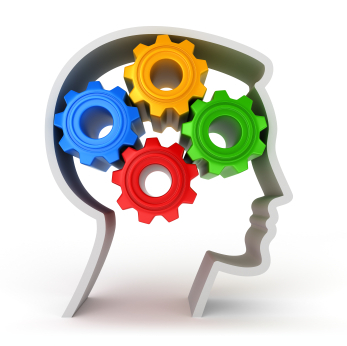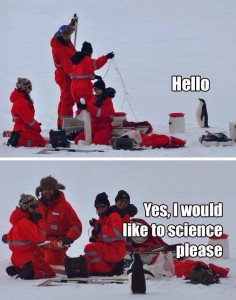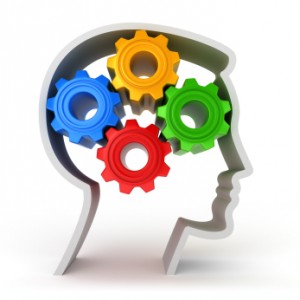
It’s very likely that some of my clients think I’m a real pain in the ass to work with. I have to be, at least from their initial perspective, for it’s exactly what makes me seem like I’m being evasive is exactly what gets them the unprecedented results they’ve been looking for.
Here’s a typical conversation: “Hey David, I have a question for you.” To which I respond, “OK, I have questions for you.”
I don’t have (many) answers, but I have a lot of questions. To understand what that means, we have to take a trip back to middle school science.
The Scientific Method
If you’re not familiar with the scientific method, you’re about to get a crash course. The scientific method is currently the best algorithm we as monkeys who stood up have to begin to understand the world around us. It’s far from perfect, but it’s what we’ve got.
The scientific method begins with asking a question.
“If the sun is so powerful but the power is very widely distributed, what could I do to harness the power of the sun?”
or:
“How do I make muscles bigger?”
The next step, perhaps preceded by some amount of research, is to construct a specific hypothesis that can be tested. The hypothesis is an educated guess as to what happens or how it happens. The key to a good hypothesis is that you have some idea in mind, and that it can be tested specifically.
“If I were to use a magnifying glass to focus the power of the sun on one spot it might be powerful enough to create fire.”
Or:
“If I were to do bicep curls often, my bicep muscles would get bigger.”
Notice that the scientific method begins with a question, but a hypothesis is more like a statement of belief.
Next, you would design an experiment to test the hypothesis. Experimental design is important because the results are only as good as the experimental design. You can be perfectly correct in your hypothesis, but not prove it out correctly because your experimental design was flawed.
“I will take a magnifying glass that combines a 6 inch diameter area of sunlight into a spot one sixteenth of an inch in diameter and determine how much heat is generated by measuring the temperature rise on the bulb of a thermometer. Or just burn some ants.”
Or:
“I will do one set of bicep curls to failure every other day for the next 4 weeks.”
Keep in mind the limitations of experiment design. For example, I rarely if ever train to failure, but if I were designing an experiment for multiple people I would want to control the variables, so I might use failure as a common stopping point for everyone.
Once you’ve come up with your experiment that you’re going to use to test, you’ll perform the experiment and collect data.
Collecting data on your experiment is vital. I am one of the biggest proponents of keeping a training journal or log. This is your experiment data. You are hopelessly lost without it. If your training results suck I would bet my stack that you don’t keep a training journal.
Second to last you analyze your data. In short, did it work?
“Through a highly accurate analysis of the smoke coming up from the melting ants, I was able to determine that a magnifying glass does in fact enable you to concentrate the power of the sun.”
Or:
“My biceps have grown a half-inch in circumference since 4 weeks ago, proving that 4 weeks of 1 set of bicep curls to failure appears to be associated to muscle growth in my biceps.”
Finally, and this is perhaps the most important step of all: construct a new hypothesis or ask a new question. The fundamental limitation of the scientific method is that when you’re done with an experiment you have an answer that is very limited in scope, most especially temporally or in terms of time. In other words, you only know that what happened, happened right now – you don’t know that it will always happen and you don’t know that it will happen to everyone unless you test everyone. One set to failure of bicep curls might make your muscles grow now, but unless it always makes (your) muscles grow then it’s not really the answer, it’s an answer.
The question you ask could be bigger, such as could the same principle apply to other muscle groups? Or it could be smaller, such as what would happen if you were to change the movement variation slightly.
In any case, the process never ends.
The Experimental Mindset
This questioning or experimental mindset is one of the most fundamental ideas I hope to instill in people I interact with. No one else has the answers, but they’re inside of you if you are willing to ask the questions to find them.

Asking better questions, like nearly everything worth doing, is a skill that you will develop over time. As a coach I consider asking questions to be my most valuable skill. When I ask a client if turning their foot out slightly makes their movement feel better or test better I am asking a better question of their body. Sometimes the questions are the more traditional kind such as “how much protein are you eating” but often the questions are for the body, such as “what happens if you eat more protein?”
One of the unexpected benefits of approaching training (and life) with this experimental mindset is the understanding that experiments often don’t yield the results you predict or expect, and that’s an acceptable natural part of the process. Too many people are wrapped up in guilt with what they can and can’t do or change especially when it comes to exercise and health. If you decide that you’re going to start eating better across the board it’s easy to feel guilty and frustrated when you predictably fail a few days in. On the other hand, if you acknowledge that it’s an experiment to see what you’re capable of doing then it’s simply a data point when you realize that you aren’t capable of doing what you had in mind – yet.


Leave a Reply
You must be logged in to post a comment.